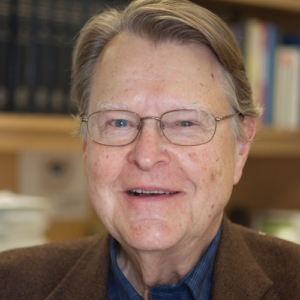Clyde Hutchison obtained his B.S. in Physics from Yale. As an undergraduate, he worked on bacterial spore germination with Carl Woese, then a postdoctoral fellow in the lab of Harold Morowitz. His Ph.D. research, in the laboratory of Robert L. Sinsheimer at Cal Tech, concerned the genetics of bacteriophage phiX174.
In 1968 he joined the faculty of The University of North Carolina at Chapel Hill. There he collaborated with Marshall Edgell to analyze the DNA and the virion proteins of phiX174. They developed a marker-rescue assay for specific DNA fragments, which they used to associate phiX genes with specific restriction fragments. They also used restriction enzymes to analyze mammalian mitochondrial DNA, identifying restriction fragment length polymorphisms, and demonstrating maternal inheritance of mitochondrial DNA in mammals.
Clyde spent a sabbatical in Sanger’s lab in Cambridge, England in 1975-76. There he took part in sequencing the genome of phiX174, the first DNA molecule completely sequenced. While at Sanger’s lab, Clyde met Michael Smith. Upon Clyde’s return to Chapel Hill, they collaborated to develop the method of site-directed mutagenesis.
Clyde continued his collaboration with Marshall Edgell to clone and sequence the beta-globin gene cluster in the mouse. They also discovered and characterized L1, the most abundant transposable element in the mammalian genome.
In 1990, he began work with Mycoplasma genitalium, the organism with the smallest known genome for an independently replicating cell. This work led to a collaboration with The Institute for Genomic Research (TIGR) to sequence the entire genome. On sabbatical at TIGR, he worked to define the minimal set of genes required for cellular life by developing the method of global transposon mutagenesis.
In 2003, he began to collaborate with Hamilton Smith, Craig Venter and others to work on the chemical synthesis of genomes. In July 2005 he joined the synthetic biology group at the J. Craig Venter Institute, where he is now a Distinguished Professor. The group produced a “synthetic cell” programmed by a chemically synthesized genome. In the course of that work powerful tools for engineering mycoplasma genomes were developed. The group has since applied these methods to designing, constructing, and analyzing a minimal bacterial cell.
Clyde is a member of the National Academy of Sciences and a fellow of the American Academy of Arts and Sciences and the American Academy of Microbiology.











